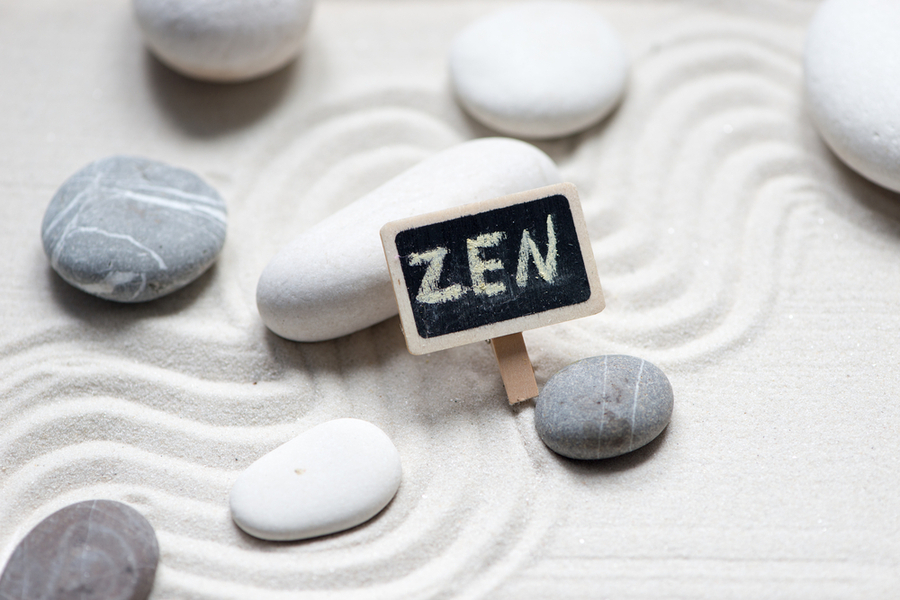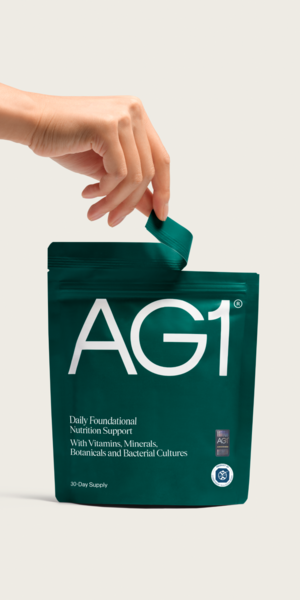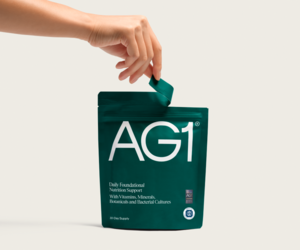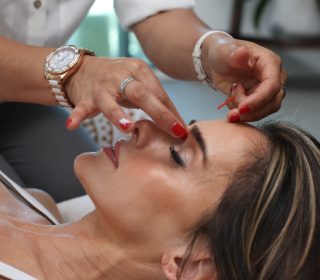13 wellness trends you need to know to improve your life in 2022

What. A. Year. Sorry, years – plural. When you add up all the days, weeks and months we were locked down in England alone, it makes for grim reading. It’s absolutely no surprise people’s mental health has suffered as a result. And that’s before (or after) testing positive for this nasty virus.
Luckily, there are some innovative wellness predictions that are set to take this year by storm, and with this global industry estimated to be worth $7 trillion by 2025, we’re not the only ones taking this seriously.
1. Mental fitness
Now viewed as a necessity rather than a choice, self-care is big business. With millions of people using social media as their main way of communicating (especially if isolating), it’s easy to keep track of conversations around mental health and, more importantly, normalising it. In fact, licensed therapists are now using TikTok to cut out the middleman (ie, vocal celebrities – although that’s vital, it’s not enough) by educating the younger generation about mental health and to encourage those struggling to speak out about their symptoms.
In order to achieve mental fitness, we need to treat the mind like our bodies. And that means fuelling it correctly. Adaptogens – natural substances that help the body adapt to stress – are key, and are expected to dominate the mental health market in 2022. This means we’ll see supplements with adaptogens such as ashwagandha (a prominent herb in Indian Ayurvedic medicine), turmeric and ginseng trending on social channels, with good reason.
2. Sea greens are the new superfood
Our friends across the pond know what they’re talking about when it comes to food trends, and this year Americans claim it’s in the (much bigger) ponds where we’ll find our next superfood: sea greens. Think kelp and seaweed – but not the crispy, sugar-laden stuff you order from a Chinese takeaway!
Brimming with nutrients such as manganese, vitamins C, B and K, fibre, iron, iodine and omega-3 fatty acids, they are an immune system’s dream. Oh, and they taste good. But that’s not all. These aquatic leafy wonders also fight climate change and improve water quality. Coastal ecosystems, where these sea greens thrive, absorb 20 times more carbon from the atmosphere per acre than forests, helping to prevent rising temperatures.
As a nation, buying products that benefit our planet is increasingly at the forefront of our minds, and sea greens fit that bill.
In May 2021, the Food and Agriculture Association of the United States said we’re about to enter a “seaweed revolution”. Looks like we’re now in the thick of it.
3. Diversity inclusivity
While this should be a given in the 21st century, diversity in the workplace and across global brands is still lagging behind. Not for long though. This year will see a breakthrough. Companies will expand job requirements to include skills and traits from all backgrounds, race, age, gender and religion, and focus on how well a person will fit into the workforce rather than their ability to complete tasks.
In the same way that companies have physically adapted their workspaces to be fully accessible for those with a disability over the past 20 years or so, they now need to evolve in other ways. In fact, in the same way organisations embraced the Black Lives Matter movement in 2020, many employers have introduced unconscious-bias training among employees.
British consumer goods company, Unilever, is leading the way when it comes to diversity. It boasts a 50/50 gender balance across its management, and since signing the Declaration of Amsterdam (a global statement of support for LGBTQIA+ rights) in June 2020, as well as using its 400+ global brands to accelerate change in racial discrimination and aiming to make 5% of its workforce represented by people with disabilities by 2025, Unilever is well ahead of the pack.
4. Facial care
Sure, we haven’t seen many people in person over the last two years but our appearance is still important… Zoom call, anyone? Since the pandemic started, only being visible from the neck upwards has proven a big deal. Clear skin? Check. Straight, white teeth? Check. And each industry is set for growth in 2022 and beyond.
Wearing masks has evidently played havoc with our skin, as Google Trend searches for ‘microbiome skincare’ grew by more than 5,000% in the last 12 months. This has prompted a rise in skincare which includes pre- and probiotic ingredients intended to rebalance the skin.
With this in mind, we’ll be expecting our make-up to act like skincare too. A report by Mintel revealed 50% of us now prefer to buy cosmetics that have skincare benefits.
Meanwhile, it’s all smiles in the cosmetic dentistry department, with a surge in demand for the perfect teeth. The global market is expected to grow by 5% annually to reach an estimated £21 billion by 2026.
5. Sperm health
Once a taboo subject, fertility issues – particularly around the male species – are thankfully getting talked about and addressed more. While we’ve known about women’s possible hurdles such as egg quality (and quantity), blocked fallopian tubes, ovulation problems (PCOS, ovarian failure)… the focus will finally shift onto men in 2022.
Among heterosexual couples, the male partner is a contributing factor around 30% of the time. Sperm quality, amount and motility (ability of sperm to swim the right way) all contribute towards infertility. Shining the spotlight on these issues will raises awareness and educate couples on the next steps. One will be to encourage men to test their sperm as early as possible and regularly, as these issues go beyond conception. Poor sperm could indicate health problems in later life.
It’s common knowledge that men are reluctant to address their sperm and reproductive function, but there are now male fertility tests they can do at home without visiting a clinic. So, no excuses!
6. Fitutainment
Looks a strange word, huh? That’s because it is. But the concept isn’t. Fitness and entertainment rolled into one, because let’s face it, a lot of us need that kick up the bum when it comes to breaking out a sweat. This way, we actually enjoy ourselves at the same time. Immersive workouts, which feature visuals as well as music and instructors, combine to build a fitness metaverse. Companies such as Fit XR and Supernatural already have willing customers signing up for virtual reality fitness classes or games. Whether it’s to box, dance, cycle, climb mountains or to do a good old-fashioned HIIT class complete with live-in instructors, it’s like playing a computer game rather than exercising. Since the various lockdowns we’ve endured, fitness gaming has brought with it a whole new community of like-minded people, too. It’s no wonder the industry is set to blow up even more this year, and is predicted to be worth $44.7 million by 2026.
7. Alcohol-free drinking
With Dry January in full swing, the health conscious among us will be tempted to go that extra step into February and beyond thanks to more choice in the spirits department. For years we’ve seen Shloer, mocktails and more recently, Nosecco, hit the supermarket shelves. But 2022 sees the proper introduction of alcohol-free spirits.
Yes, they made their debuts a couple of years ago, when brands such as Lyre’s, Caleño and Seedlip took the teetotal world by storm. However, they’re now set to be more readily available in swanky bars and pubs, too. Alternatives to whisky, gin and rum have been met with open arms, and new brands are utilising botanicals and grains to offer the ultimate substitute to pair with your cola and lemonade. Even US-inspired hard seltzers have been popping up, especially among the younger generation. Breweries also dabbled in non-alcoholic beers in the last two years, to much aplomb.
In 2021, sales of non-alcoholic drinks reached a staggering $3.1 billion, and that’s set to increase as the trend for mindful drinking continues this year. We’re definitely drinking less, but still demand a tipple worth toasting to.
8. At-home beauty tools
Not being able to get to a salon for any beauty needs these past couple of years has resulted in an alternative regime. The separation from therapists and beauticians prompted an investment in at-home tools such as LED face masks and microcurrent devices, and this trend has continued even when shops have reopened. Brands, therefore, recognise this and are busy meeting the demand. We can also look forward to cryotherapy machines, hi-tech hydrafacials, cold lasers, skin rejuvenation treatments and micropeels.
Valued at $9.5 billion in 2020, the global home-use beauty devices market is expected to reach $90 billion in the next decade.
9. Financial wellness
Just the word finances conjures up panic and stress for a lot of us. And while high street banks continue to close around us, more and more people are being forced into remote banking, whether they like it or not. But it doesn’t have to be a dreaded chore. Keeping on top of our incomings and outgoings has an impact on both our mental and physical wellbeing. We’re talking about more than the tried and tested methods, but new apps that have wellness at their core.
Unique financial plans addressing personal goals for individuals will be at the forefront, as well as those reducing stress by streamlining specific tasks, such as securing a mortgage without any red tape. The fastest-growing online payment system in the UK is Buy Now Pay Later (BNPL), with one in four Brits choosing this method. Fintech companies have jumped on this, and we’ll see more ‘relaxed’ payment options offering flexibility and convenience, and therefore a better state of mind.
10. Smart supplements
Popping vitamins and supplements is nothing new, we hear you cry. But listen up. This year our old favourites will enjoy an upgrade. Instead of a one-size-fits-all, there are now personalised options that take in our genetic make-up and use a combination of vitamins and minerals that nurture specific areas of bodies. This new era of supplements also includes scientific improvements: calcium, magnesium and probiotics will replace our regular vit As and Cs. While a marriage of micronutrients, with targeted botanicals and more bioactive compounds that are vital for cell and tissue health, will surface.
Forward-thinking formulas that support skin hydration and elasticity are set to be big news, as supplements become more than just a gap-filling strategy (elements missing from our diets).
11. Indoor air quality
Once only a problem for those unfortunate enough to have damp or mould oozing from their walls, air quality these days is as vital as heart health. It may have taken a pandemic and months of working from home to make us realise the air around us needs purifying, but we feel better for it. Sales of air monitoring machines reached $4.4 billion in 2021, and the market is expected to be worth $5.9 billion by the end of 2026.
But it’s not just the rise in popularity of air purifiers that’s on the horizon, but also tracking technology – think fitness trackers without the guilt of not leaving the sofa all day. Dyson and Coway have just launched improved app-connected air purifiers, which sends reports to our phones and adjusts air flow when necessary. Amazon’s December launch of its Smart Air Quality Monitor connects to Alexa and helps users to track and measure particulate matter, volatile organic compounds, carbon monoxide, humidity and temperature. Perfect.
12. Post traumatic world
Addressing trauma, whether it’s life-altering or simply anxiety-inducing every time we think about it, is a welcome trend for 2022. Once a way to showcase the best bits of life, social media platforms such as TikTok and Instagram have become a safe place for celebrities, health experts and Joe Public alike to open up about their past or present traumas and gain the help they need – be it in the form of meeting like-minded people or accessing specific aid for the future. By the end of 2021, more than half a million posts (and counting) on Instagram include the hashtag #traumarecovery, while TikTok saw videos tagged #traumahealing have 338 million views. Recognising and normalising trauma and sharing experiences in this way will help those who need treatment to seek it sooner.
13. Psychedelics
No, we’re not jetting off to party in Ibiza. But the hallucinogenic drugs usually associated with the club scene show new promise for treating those with mental health problems. Experts have used the term ‘microdosing’ (taking 10-20 micrograms of LSD or magic mushrooms every now and then as opposed to a tripping dose of 100 micrograms) as a positive step towards improving wellbeing.
The last couple of years saw CBD oil thrown into the spotlight to help the body adapt to stress and other ailments. But this year adaptogens, specifically mushrooms, are taking its place. Used for centuries to cure inflammation, the following wild super shrooms are now sought-after for their calming, adaptogenic qualities: reishi, shiitake, lion’s mane, chaga, himematsutake and cordyceps. They’re coming to a supermarket near you soon.
And the rest…
• Reducetarianism
Thanks to our awareness of how meat-eating affects the environment, not to mention our health, more and more people are choosing to reduce their intake of animal products.
• Pets grooming
Why shouldn’t we pamper our fur babies like we do ourselves? Deep-cleansing charcoal doggy shampoo, plant-based conditioners and even skin/coat treatment are just some of the products our pooches and co can indulge in this year.
• Sound healing
Like smells, sounds can be evocative without even trying. But now, ‘functional music’ combines algorithmic sounds created by artificial intelligence to aid better sleep; personalised soundscapes for study or relaxation; and sound baths to yield vibratory qualities for recovery.
• Yuzu
A citrus fruit that won’t look out of place in our G&Ts will be making its way onto food menus and cocktail lists this year. Tangerine-sized with a sharp taste, the Asian-grown yuzu is a fresh revelation.
• Menopause
Product launches, devoted healthcare resources and improved medical education and access are all going to help us break the stigma of menopause (early or otherwise). Suffering in silence like our mothers and grandmothers did will no longer be an option. Period.
Insights for wellness in 2030
In the future, we’ll all be focused on the power of six. That’s six main wellness categories: health (it goes without saying), fitness, nutrition, appearance, sleep and mindfulness. And it’s exciting.
Easy access for health matters will include at-home devices and triage systems that only involve a doctor if absolutely necessary. Fitness will see tracking at the forefront of our workout regimes, with guidance, motivation and coaching at hand (literally). Sustainable eating – and longevity of it – will continue in droves, with a whopping 35% of people in the UK, US and Germany already sold on drinking vegan milks.
Expressing ourselves will become easier, as we indulge in clinical treatments such as microdermabrasion (currently only available by dermatologists or medical clinics) offered by beauty retailers. Sleep will be a dream thanks to new innovations that track our movements and more using personalised data.
While mindfulness will be vital across all aspects of life, including work, with employers set to embrace wearables and other technology that will pay off for everyone.










